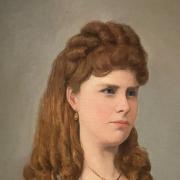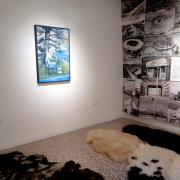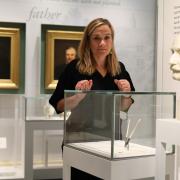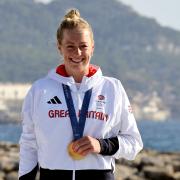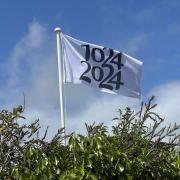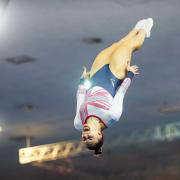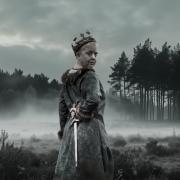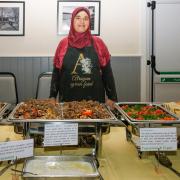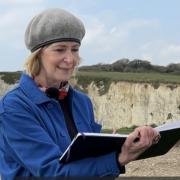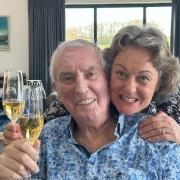Over two centuries ago, 12-year-old Mary Anning, along with her older brother Joseph, made a remarkable discovery while searching for fossils on a beach near their home at Lyme Regis. They unearthed the remains of a mysterious crocodile-like creature. This turned out to be a five-metre-long ichthyosaur dating back 190 million years. Aged 24, Mary then found the complete fossilised remains of a plesiosaur, the first of its kind.
The pioneering palaeontologist, however, didn’t receive the recognition she was due. As a female with no formal education, sceptics suspected her plesiosaur discovery to be fake. Though Mary was frequently consulted by male scientists, she was never allowed to participate in the Geological Society’s discussions. In fact, it wasn’t until 163 years after her death that Mary Anning was included in the top ten list of women who have most influenced the history of science.

Lyme Bay denizens are already familiar with her story. A crowdfunded project Mary Anning Rocks, started by local schoolgirl Evie Swire, saw a statue of Mary and her dog Trey erected by the Marine Theatre in 2022. There’s also a blue plaque on the town’s museum, which is built on the site of Mary’s family home. However, the fossil hunter’s name is not known to everyone, and that’s something that film director Sharon Sheehan is hoping to change when, Mary Anning and the Dinosaur Hunters, is released in June.
‘My quest in creating this film biopic is to bring Mary Anning's work, life and plight to light, so she gains the recognition she truly deserves for her contribution to science, palaeontology and geology,’ Sharon explains. ‘I wish for her to be renowned globally as the preeminent, most influential and celebrated palaeontologist of all time.
‘My film is based on an honest and true story about one of the world’s most remarkable women. A woman side-lined by patriarchally written history, whose life is utterly fascinating. Despite her spectacular finds, and the fact that Charles Darwin’s book On the Origin of Species was highly influenced by her staggering discoveries and research, Mary is still relatively unknown. When I first visited the Philpot Museum in Lyme Regis over 20 years ago, I was astounded that I had never heard of this trailblazing woman. She died of breast cancer aged 47, almost destitute. I wanted to understand why, and this led me to researching and writing the screenplay.’

Fossil Collectors
Sharon has had a keen interest in palaeontology since childhood. She happily recalls fossil hunting adventures with her brother. ‘We once found a large ammonite embedded in a sandstone boulder which was wedged in a brook near our home. Our father chiselled it out for us,’ she smiles. ‘On another occasion, we found a mammoth's tooth. On walks home from school, we’d find gryphaea, also known as devil’s toenails, as well as fossilised shells.’ The penultimate inspiration was a school trip to the Natural History Museum in London. ‘Seeing the full-sized cast of their diplodocus skeleton in the Hintze Hall was a life-changing experience.’
Sharon visited Lyme Regis to fossil hunt with her family as a child and subsequently brought her own children to the Jurassic Coast too. It was during a stay in Dorset, around the year 2000, that she started researching and writing the screenplay for Mary Anning and the Dinosaur Hunters. ‘My daughter Katharine was an infant at the time, and we were on a fossil hunting expedition in Charmouth. She was searching near the cliffs wearing a dress and I said, “Whoever fossils in a dress?” to which she replied, “Mary Anning!”. We found the most beautiful iron pyrite ammonites that day - the first of a myriad of finds.’
Katharine Hamilton now stars as the young Mary Anning in her mother’s latest film production. ‘Both my children were some of the first attendees to experience the Lyme Regis Fossil Festival - and they became the poster children for the festival at the National History Museum. Sally Collins and Jeremy Young, formerly from the museum, were great mentors and taught them the beginnings of micropalaeontology.’ Influenced by this, Sharon’s daughter went on to garner a first-class honours degree in Earth and Ocean Science from the University of Brighton. ‘This also intensified Katharine’s interest in playing Mary in the film and gave her a real-life research background to the protagonist.’

Alongside Katharine, the cast of Mary Anning and the Dinosaur Hunters includes Jonathan Moore, Mark Fletcher, Tom Machell, Paul Storrier and Jenny Agutter. The latter is best known as Sister Julienne in the popular BBC television series Call the Midwife. Sharon, who also has an acting career in London and Hollywood, appears as the adult Mary in the film.
‘Jenny Agutter has been incredibly supportive at every stage. She agreed to play Elizabeth Philpot, the woman who mentored the young Mary Anning and was a lifelong friend. Jenny provided me with vital feedback on the script and directed me brilliantly when I played Mary opposite her.’

A Dream Location
While writing the screenplay, Sharon spent time looking for fossils with Lyme Regis palaeontologists, including Paddy Howe and Chris Andrew. She also worked alongside Natalie Manifold, an expert on Mary Anning. ‘I carried out extensive research at the Philpot Museum, Dorset Museum, the Natural History Museum and with staff at all the Lyme Regis Fossil Festivals I attended. Everyone has been extremely supportive and museum display replicas of Mary’s finds, including the original ichthyosaur, were used in Mary’s fossil workshop scenes, courtesy of Lyme Regis Museum and Dorset Museum.’
Some of Sharon’s own fossil finds also became props. ‘There’s an ichthyosaur vertebra that was found by my son, and a perfect ammonite and cretaceous shell that I found on Monmouth Beach. I also made various Jurassic marine reptile props, together with the crew. One day, when we were on location filming, we heard a banging sound when we stopped for lunch. To our horror, there was a tourist bashing away at an ichthyosaur prop!’
Filming took place on location in Dorset, mainly around Lyme Regis and Charmouth, and on sound stages in Cornwall. ‘We filmed over an initial two weeks for the first part of the biopic, which covers Mary’s childhood and up to her finding the first ichthyosaur. The second part, which covers the discovery of the Dimorphodon macronyx (a type of pterosaur) and the plesiosaur, took about three weeks to shoot. The weather was fabulous for the first section. This was ideal as it reflected young Mary’s hopes and dreams. It even rained on the day we needed it to!’

Sharon shot Mary Anning and the Dinosaur Hunters on Super 16mm Kodak film. ‘I love shooting period films on real film. The silver nitrate and grain give it a luminosity and depth that is hard to beat.’ The downside, she says, was waiting for the dailies of the previous day’s shoot to be developed. ‘To see whether the film turned out at all - but this is also exciting. We were shooting at a ratio of approximately two takes of each shot. So, we rehearsed thoroughly to save film and developing costs.’
Funding has been a major stumbling block for this project. ‘I could have made the film in a few months had it not been for the lack of financial support,’ says Sharon. ‘I hope this will improve in the future as I have so many stories I would love to share on film.’
So, it’s understandable that Sharon is particularly excited about the upcoming world premiere of Mary Anning and the Dinosaur Hunters at this year’s Lyme Regis Fossil Festival. ‘It feels as though it’s gone full circle - from the writing and making of the film being inspired by a visit to the Fossil Festival and Lyme Regis Museum, to its completion and screening there.’
Watch a trailer of the film at facebook.com/mermadefilms/videos. More details at maryanningfilm.uk, follow on Instagram @maryanningfilm




